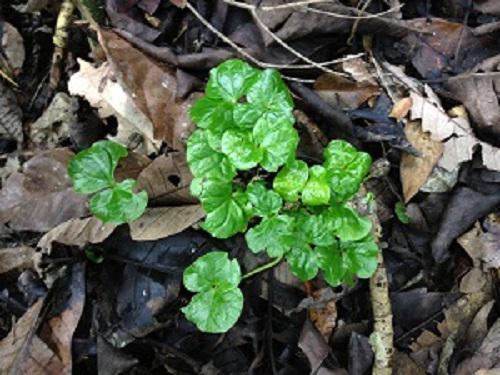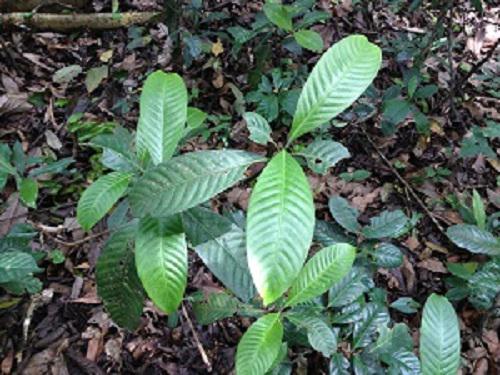Dayani Chakravarthy
he project aims to:
a) Understand the dispersal of C. canephora seeds into forests
b) Compare seed arrival of C. canephora with other native flora and
c) Examine the effect of C. canephora on regeneration of native species.

C.canephora saplings. © Ajith Asokan.
Plant invasion is one of the major threats to biodiversity conservation in the Western Ghats. A few studies have reported that Coffea canephora (also known as robusta coffee), an extensively cultivated crop in the Western Ghats has spread in to neighbouring forests and is present in high densities in both disturbed and undisturbed forests. These studies have also noted a negative relationship between C.canephora stems and native shrub density, indicating that it has detrimental effects on native flora. We already know that C.canephora is dispersed by native frugivores like small birds, civets, monkeys and elephants.

C.canephora seedlings. © Ajith Asokan.
The area under coffee cultivation in India has increased from 92,523 hectares in 1950-51 to 4, 09,690 hectares in 2011-12. Concerns for native plant species are heightened with increasing cultivation of C.canephora which, according to the coffee board now occupies 51% of area under coffee as opposed to 27% in 1950-51. Any management intervention would require information about a) dispersal mechanism of coffee into forests b) the effect of C.canephora saplings on regeneration of native species. It will also be extremely useful to understand whether specific species are most affected by coffee.
This study will be among the first to document the dispersal mechanism and the effect of C.canephora on regeneration of native evergreen plant species. The study aims to understand this threat in hope of generating ideas to prevent further invasion. Specifically, the study will quantify the arrival of coffee seeds into forests and identify modes of seed dispersal which will provide information on the nature and scale of the invasion. In order to provide information on changes in plant species composition in the presence of coffee plants, an experiment will be set up to monitor differences in plant regeneration and growth over long periods. This experiment will include removal of C.canephora plants from some plots to compare rates of regeneration and growth. This information is crucial in suggesting management interventions to control and prevent further invasion.